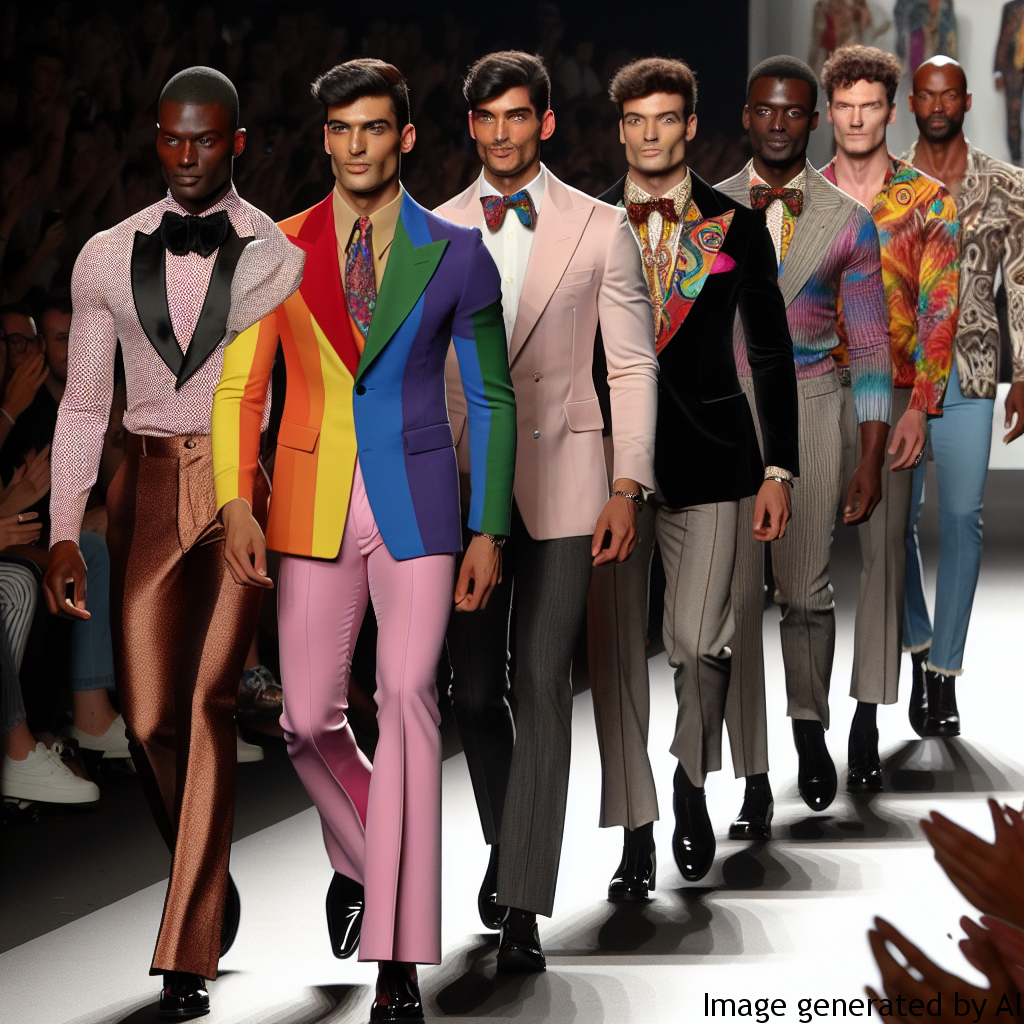Introduction
Menswear has undergone a significant transformation over the past few decades, shifting from traditional constructs to incorporate a wider array of styles and preferences. The LGBTQ+ community has largely facilitated this transformation, symbolizing the unfettered expression of individuality through attire. This piece will explore men’s fashion in the LGBTQ+ community, how gender expectations affect psychological health, the impact of gender roles, and how to improve mental wellbeing while respecting these roles.
Gender Expectations and Their Influence on Men’s Psychological Health
Traditional Gender Expectations
Traditional gender expectations often include narrow perceptions regarding how individuals should dress, act, and express themselves. For men, these expectations can include wearing ‘masculine’ attire, exhibiting strength and stoicism, and choosing careers perceived as manly. These norms can detrimentally influence LGBTQ+ men’s psychological health, causing distress, identity conflicts, and in some cases, psychological disorders.
Influence on LGBTQ+ Men
For LGBTQ+ men, these pre-existing gender norms can create an uncomfortable dissonance between society’s expectations and their personal identity. They may feel unduly pressure to fit into a confined mold that does not represent them authentically. This potentially leads to self-esteem challenges, anxiety, depression, and other emotional stresses.
How Gender Roles Influence Men’s Lives
Gender roles and expectations can influence every aspect of a person’s life, from employment opportunities to personal relationships. For instance, a man who prefers fashion styles typically associated with women may face stigmatization, ridicule, or discrimination. This societal resistance furthermore discourages self-expression and the ongoing struggle to comply with these conformities may instigate mental and emotional turmoil.
Tips for Improving Psychological Health in Regard to Gender Roles
In order to navigate these societal pressures, it’s crucial to foster an environment within which anybody can express themselves freely. Some strategies to enhance psychological well-being include seeking mental health support from professionals familiar with LGBTQ+ experiences, finding supportive communities and allies, and rejecting restrictive gender norms to embrace personal true-to-you style. In essence, allowing yourself the freedom to dress and present as feels natural to you can significantly improve mental health.
Conclusion
In conclusion, men’s fashion in the LGBTQ+ community represents more than just a wardrobe choice. It symbolizes self-expression, identity affirmation, and resistance against restrictive societal norms. Acknowledging and addressing the mental health implications of these oppressive norms stands critical in cultivating a society where diversity in gender expression is not just accepted, but celebrated.

